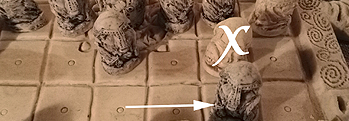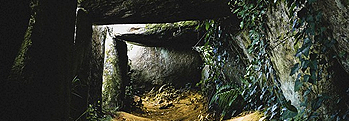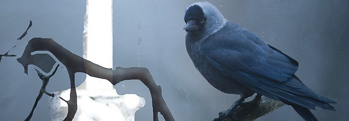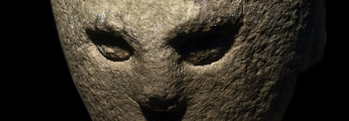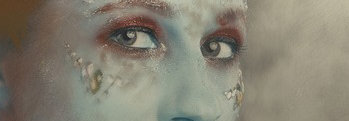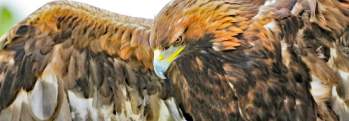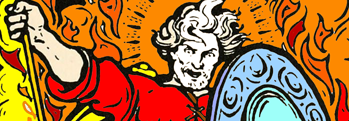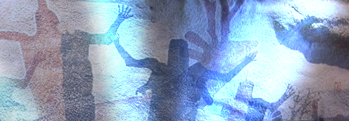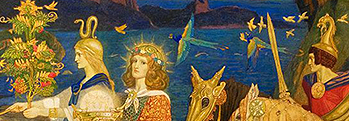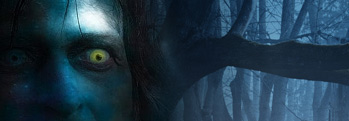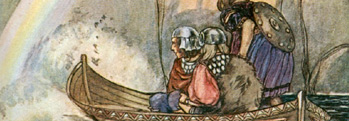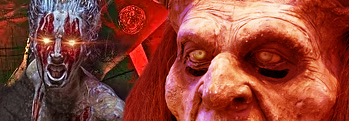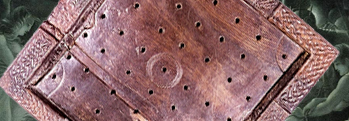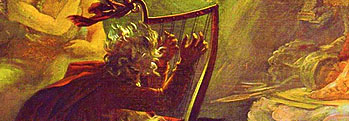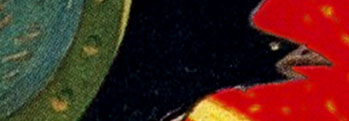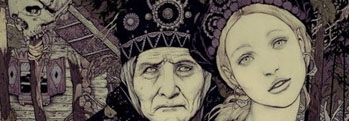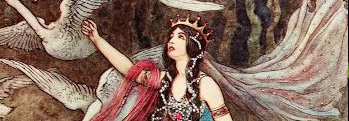The Rules of Fidchell
Irish and Celtic myths and legends, Irish folklore and Irish fairy tales from the Mythological Cycle
The Rules of Fidchell
 We are delighted to be able to present to you the rules of Fidchell, the Irish game of kings! This game can be purchased, but it's easy to get started and try it out for yourself. All you need is a 7 x 7 board, which can be squares or pins marked out - even on paper - 16 white or attacker pieces, a king piece, and 8 darker-coloured defender pieces, two champions from each province.
We are delighted to be able to present to you the rules of Fidchell, the Irish game of kings! This game can be purchased, but it's easy to get started and try it out for yourself. All you need is a 7 x 7 board, which can be squares or pins marked out - even on paper - 16 white or attacker pieces, a king piece, and 8 darker-coloured defender pieces, two champions from each province.
The aim of the game is for the king to escape, or for the attackers to capture the king.
Some Background:
The ancient game of Fidchell or “wisdom of the woods” is woven through many Irish stories. It is older than chess by far, and legends tell it was invented by none other than Lugh of the Tuatha De Dannan, and predates chess by many centuries.
Fidchell held a central role in the celebrations of Lugh, and at Samhain festivities as well, where it was consulted for prophetic hints about the year to come. No battles were allowed except those which took place on the Fidchell board. It was reserved for the nobility, the warriors, and the druids for a long time - and they were required to master it!
Those skilled in Fidchell were held in great esteem as people of cunning mind and wit, adversaries to be respected.
This is one of the tales which explains how to play it, Mac de Cherda and Cummaine Fota:
"Good," says Guaire, "Let's play fidchell."
"How are the men slain?" asks Cummaine.
"Not hard, a black pair of mine about one white man of yours on the same line, disputing the approach on the far side (?)"
"My conscience, indeed!" said Cummaine, "I cannot do the other thing, but I shall not slay your men, you will not slay my men."
For a whole day Guaire was pursuing him and he could not slay one of his men.
"That is champion-like, o cleric," said Guaire.
The Rules:
There are many other legends providing different instructions, and it seems that each Dún or household had its own version, in much the same way that poker games have their own house rules depending on where you play. The most commonly accepted rules are presented first, then the optional rules and then some variations afterwards. It would be as well to try out different rules and see which ones you like best.
- The defenders or King's champions go first, in layout A
- If the King reaches the edge, he wins, see image E
- If the King is surrounded on four sides by the attackers, the attackers win, see image D
- Pieces can move up, down, left and right like the castle or rook piece in chess, see image F
- Pieces may not jump other pieces
- Do not announce check or check mate
- Pieces are captured by trapping them between two of your own pieces, see images B and C
Optional Rules:
- Pieces can voluntarily land between two pieces without being captured, and stay there on the next turn too
- Only the king may occupy the throne, others can pass over it
- The King may also be captured with an adjacent defending piece, that is to say the King cannot move for whatever reason due to enemy movement
- Any pieces can be captured against the throne
- No skipping turns
- Double traps may happen when two pieces are trapped by an opposing piece moving in between them
- The King can’t help in capturing pieces
- The King can be captured with two pieces
- Pieces can only move one space at a time
- A piece can sacrifice itself on the throne to capture another piece, but is also lost
- The King can be captured against throne
- Corner squares act like opposing pieces
- The King must reach a corner to escape to one of the four provinces
The Ard Rí or High King Variation, see image G
- The King can be captured against the edge
- The King must reach a corner to escape one of the four provinces
- Only the King can occupy corners
- Corner squares act like opposing pieces
Lannach, the Cunning Sword Variation, see image h
- The attackers make the first move
- The King can only move one square at a time
- The King alone can occupy the throne and corners
- If the King reaches an edge, he can move more than one space along the sides
- The King wins if he reaches a corner
- The King can be captured against centre or corner squares
Brandubh – the Black Raven, see image i
- The attackers make the first move
- The King cannot capture
- Pieces can be captured next to corner square
- Only the King can occupy corner squares
- The King can be captured against sides
Throwing the Bones:
At the beginning of each turn, both combatants throw a single knucklebone
- If it lands wide, you can move normally, see image J, 1 and 2
- If it lands on the narrow side, you may not move in this turn, see image J, 3 and 4
A different variation means you can roll the bones to see how many spaces you can move in this turn, divided between your pieces or used by only one piece, which should be agreed before play begins
- Wide Height or Cnoc – 1 (4 by the Roman style) see image J, 1
- Wide Mouth or Béal – 3 (3) see image J, 2
- Narrow Height – 4 (1) see image J, 3
- Narrow Mouth – 6 (6) see image J, 4
Fidchell boards were often very ornate, richly carved and with gold and silver pieces, and even set with gemstones. In the cattle raid of Froech, friend of Queen Maeve, a board is described as being made of white gold, and the edges and corners were of gold, while the pieces were of gold and silver, and a candle of precious stone provided light, while the board itself was too heavy for a boy to lift, as is written in Amra Columcille. Fidchell boards were listed as part of the tribute demanded by kings.
If you'd like to purchase the board in the images, it can be bought from O'Gowna Studios here, https://ogowna.com/shop/ols/products/irish-game-heritage-week-fidchell-chess but be sure to ask him for extra white pieces via email or phone first since he only sells the Lannach Variation out of the box.
Have fun! It is said that Lugh had two homes, one of which is marked on the map below.










More Stories from the Mythological Cycle
We are delighted to be able to present to you the rules of Fidchell, the Irish game of kings! This game can be purchased, but it's easy to get started and try it out for yourself. All you need is a 7 x 7 board, which can be squares or pins marked out - even on paper - 16 white or attacker pieces, a king piece, and 8 darker-coloured defender pie ... [more]
Times were hard in Ireland not so long ago, and harder yet they were before that – many’s the family was cast out of their houses for being unable to pay their rent! One such was poor Finian O’Toole, the kindly father of nine children who found himself evicted by the cruel English landlord in the parish of Kilmoe. Now it was th ... [more]
There is a tale, one of the oldest stories among the many very ancient stories of Ireland, of a man who returned to life as a man thousands of years after he first walked the earth. His legend was found in an eleventh century manuscript called Lebor na hUidre, which means The Book of Dun Cow, and it was written there by the followers of an early ... [more]
It’s a not uncommon belief that the women of Ireland in the ancient days were quiet and kept to themselves, letting the men do all the great deeds and win all the fame – but nothing could be further from the truth! From that day to this Irish women were and remain wild and fearless, willing to go to lengths as great as any man for victo ... [more]
Of great renown are the feats and deeds of the ancient heroes of Ireland, and still to this day they echo through our legends where such tales are told. But of scarce less fame were the weapons they bore, implements of glory and terror, bound to ancient spirits and clasping lightning within their shimmering length, wielded with scarcely imaginable ... [more]
The Tuatha De Danans By the force of potent spells and wicked magic, And conjurations horrible to hear, Could set the ministers of hell at work, And raise a slaughtered army from the earth, And make them live, and breathe, and fight again. So it was written in Keating's General History of Ireland, considered by many to be the definitive ... [more]
Her name was Clíona or Clíodhna and she was one of the most beautiful women of the Tuatha Dé Danann, that vanished sorcerous race whose legends echo still from one end of Ireland to the other. Some even say she was the most beautiful woman in the world, and she was worshipped as a goddess by the pagans of Ireland who followed t ... [more]
Many are the tales told of Lugh, the mightiest king of that ancient and mystical sorcerer race of Ireland, the Tuatha Dé Danann, but only one is told of his death. Now Lugh, lord of many warriors, had four wives, which back in those days wasn’t too unusual, and their names were Echtach, daughter of white-toothed Dagda, Englec, Ná ... [more]
Just as happens today, people in ancient Ireland had legal disputes and complaints they would bring before their courts, and the judge or king would try to make sense of what had happened and hand down a fair decision. But also just as happens today, there were situations where it was one person’s word against another, or there wasn’ ... [more]
The old stories of Ireland, some of the oldest in the world, tell of great ancients – almost immortals! – whose span of life stretched many thousands of years. Legends tell of their spirits passing from one body to the next, or upon occasion, staying in the one body for millennia, watching the tides of man and beast come and go. Such ... [more]
One of the chiefest and most powerful kings among the mystical Tuatha Dé Dannan was the one called Dagda, or Dagda Mór, which means “of shining skills”. He had other names too, such as Eochu the horseman, Ruad Rofhessa, lord of great knowledge, Dáire the fertile one and Aed, he of the fiery temper. Others yet called ... [more]
The Irish Brehon law codes are said to be the earliest fully developed legal system in Europe, but long before the Brehons were laid down there were earlier laws and all were subject to them, from the lowest to the highest! Women could hold their own property, were not themselves considered property, and could seek an education and improve their ... [more]
No tale of ancient Ireland could be complete without mentioning the Fomorians, dreaded foes of the Tuatha Dé Danann and all who came to conquer Ireland. The meaning of their name is debated even today, although most agree that the first part, fó, means “from below” or “nether” and the latter part means “t ... [more]
Many of the oldest records of Irish mythology and legend, which you might truthfully say are a history of prehistory, tell that the first people to arrive in Ireland were led by the lady Cessair when she fled to this land to escape the coming flood. The idols which had whispered through veils of midnight smoke that Ireland was a land untouched by p ... [more]
Throughout the old stories of Ireland are scattered mentions, and sometimes even descriptions, of some of the spells and rites used by both the Tuatha Dé Danann and those who came after them, the Gaels or Milesians, as they are sometimes known. Tales of these wondrous and mysterious feats of sorcerous skill may seem strange to us, but to the ... [more]
It was a warm and balmy summer's night, heavy with the fragrances of heather and honeysuckle, when Aengus, son of Dagda, awoke to find a beautiful young woman approaching him where he had slept. He was immediately taken with her grace and elegance, and his heart yearned for her, but when he tried to speak, she vanished! He stayed in his bed ... [more]
The river Barrow, like many rivers in Ireland, was given its name in ancient times. Few now know it once had another and very different name however, for it was when Dian Cécht walked the world, the healer of the Tuatha De Danann, that this river was first named! Dian Cécht, whose name meant swift power or swift potion, depending o ... [more]
A thousand years before the Olympic games were founded, the Tuatha De Dannan had arrived in Ireland and defeated the Fir Bolg, establishing their place on the Emerald Isle. The mighty queen Tailtiu had married Eochaid mac Eirc of the Fir Bolg, but he was killed during the invasion of Ireland by the Tuatha, so the leader of the invaders took her for ... [more]
In ancient times the Gaels would hold great festivals at different seasons of the year, such as the Tailteann Games, Tlachtga, Raigne and Lughnasadh, and it was at the beginning of August, every three years, that the festival of Carmun would be held during the festival of Lugh. Mighty were the celebrations held, with the racing of horses and the ... [more]
Long ago it was the time of the Tuatha De Danann in Ireland, and they were troubled by strife from beyond the Emerald Isle and within it. One of their mightiest warriors whose name was Lugh of the Long Hand heard that their demonic enemies from the sea, the Fomorians, had landed at Eas Dara, so he hopped up on Aonbharr, a horse which could gallop a ... [more]
Some of the most ancient Irish myths and legends tell of the Bocanachs and the Bananachs, known to the people of Ireland as fierce spirits of the air that were drawn to scenes of battle and bloodshed. Whenever armies gathered to test their might, the sky overhead would be filled with shrieking demons dancing to the sounds of swords clashing and blo ... [more]
Woven through many Irish stories, myths and legends is the ancient game of Fidchell, which means “wisdom of the wood”. It's said that it was invented by none other than Lugh of the Tuatha De Dannan, and predates chess by many centuries. Fidchell held a central role in the celebrations of Lugh, and at Samhain festivities as well, ... [more]
Well known is the ancient tale of the Children of Lir, and how two of the three of Bodb Dearg's daughters by Oilell of Aran married Lir to keep the peace in Ireland, between the rival chieftains of the Tuatha De Dannan. But less well known perhaps is the story of the daughter of the Bodb and one of her admirers, Cliach the Harpist. Cliach pl ... [more]
After the second battle of Moy Tura, Nuada the High King of the Tuatha De Danann was grievously injured, and as it was the law among their people that a king must be whole of body, Dagda Mór took his place. Mighty Dagda, of whom the ballads are sung, he was called the father of the Tuatha, the lord of knowledge, the many-skilled, th ... [more]
It is in the nature of fairytales and legends passed down from generation to generation that they might sometimes change and shift to fit the lives of the people of the time, and the more mysterious the figure the more legends accrue to it! And so it is with Donn of the Dead, king of the dead at the red tower of the dead, whose three sons cried &ld ... [more]
It was at the dawning of the world when the fair folk walked in broad daylight as bold as you and I, before the coming of the Milesians with their bitter iron blades and earthen ways, it was the time when magic was wrought and druidry had power, when heroes gave battle to gods and the titanic children of Seth still troubled the dreams of Heaven, it ... [more]
The raven has long been an omen of ill-tidings around the world, bearer of bad news and warnings, but in Ireland it was known once as a servant of the fairy Morrigan, or the raven was herself in person! She it was whose name meant the Great or Ghost Queen, from the old words for fear and greatness. Some will tell you earnestly that she was a god ... [more]
Long ago, in the time of the Tuatha Dé Dannan, one of their number became the high king of all Ireland, and his name was Eochaid Ollathair. He was a powerful magician of that sorcerous race, and by his workings he could change the weather and ensure the harvest was plentiful, as well as many other things. His wealth was vast and he was mu ... [more]
It was in the time of legends and heroes, when the Tuatha Dé Dannan had determined to go into their deep halls beneath the hills and mountains of Éireann the green, that the Dagda mór had fallen at the second battle of Moy Tura. With his slaying a new leader had to be elected and that was decided by the Tuatha to be the Red Cro ... [more]
And so it was when dragons still flew and champions walked the earth that the men of the Fir Bolg had lordship over all of Ireland. They had left Ireland centuries before due to the violence and heavy tribute demanded by the Fomorians, travelling far and wide until they came to the distant land of Greece. Although they made agreement and treaty ... [more]




